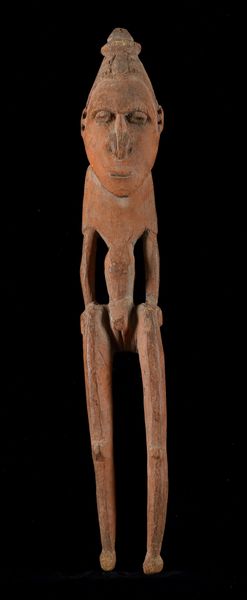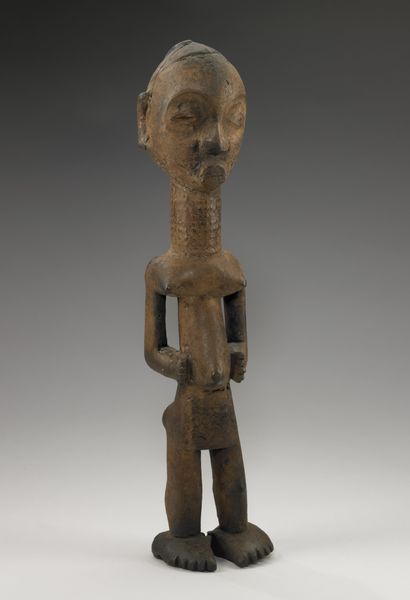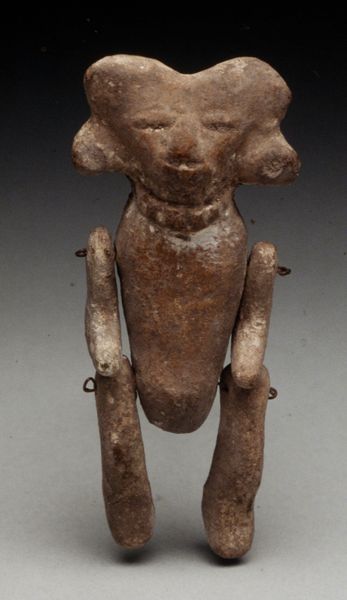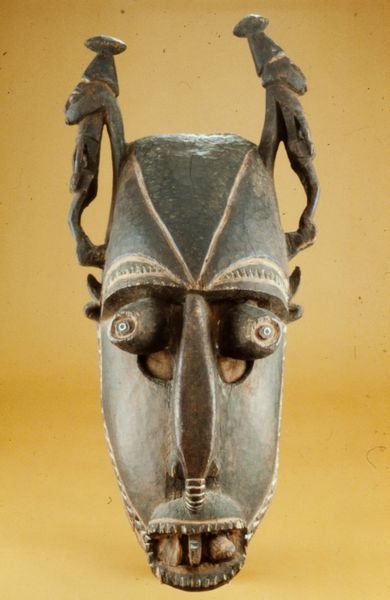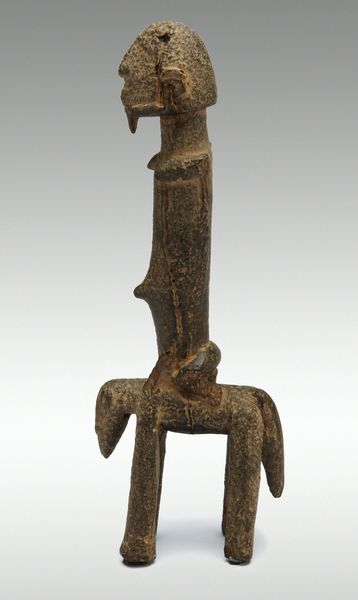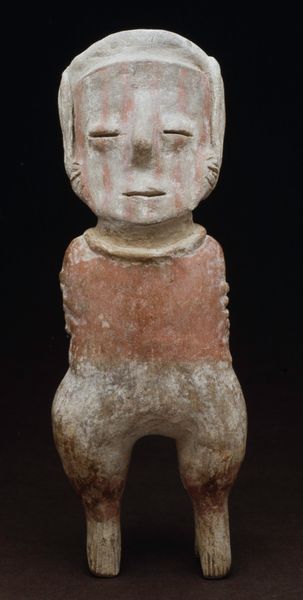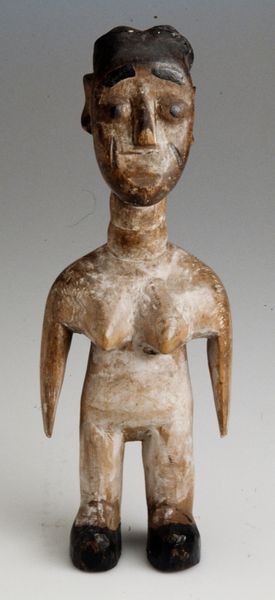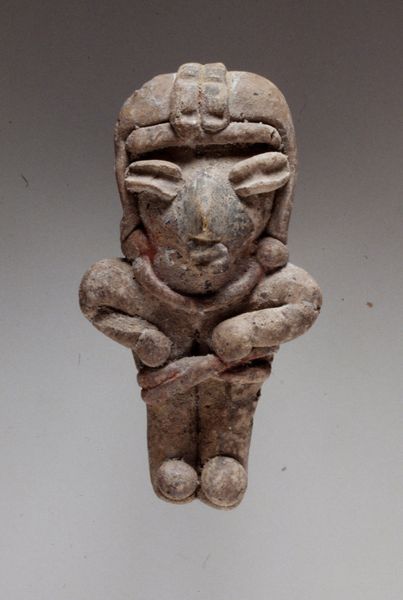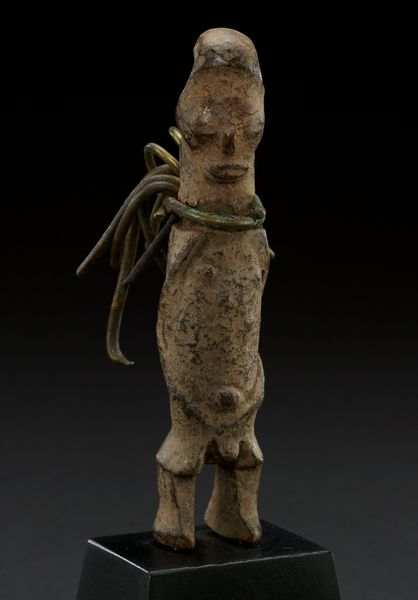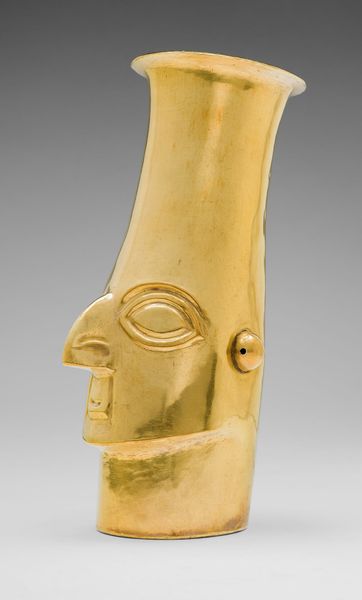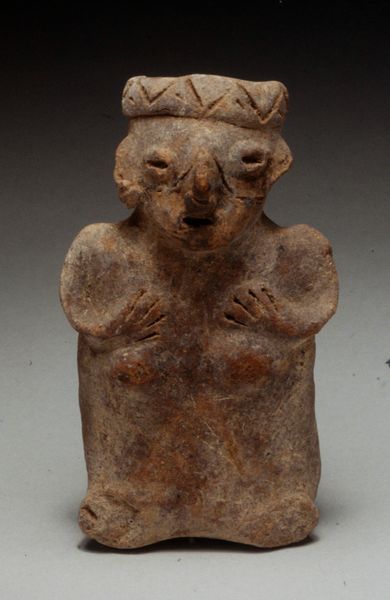
assemblage, sculpture, wood
#
portrait
#
african-art
#
assemblage
#
sculpture
#
figuration
#
sculpture
#
wood
#
yoruba-art
Copyright: Public Domain
Curator: Here we have an intriguing wooden sculpture titled "Shrine Figure," dating from around the 20th century. The Ijo people are thought to have created this artwork. Editor: It’s remarkably striking. The unpainted wood gives it a raw, almost unsettling presence. The figure's stiff pose, with its stark simplicity, makes a bold statement about its very construction and the cultural views that enabled it. Curator: Indeed. As a piece potentially intended for ritualistic use, this raw presentation aligns with many African artworks focused on connecting with unseen forces through visual form. Note its display within a major institution, speaking to changing perceptions. Editor: Yes, but what’s particularly compelling is how the medium dictates the message here. The visible tool marks, the density of the wood itself, speak to a physical engagement – the labor involved in its creation becomes part of the artwork's power, blurring those distinctions between ritual and production. Curator: And those sharp, exaggerated facial features coupled with the rigid body suggest an authority figure, perhaps symbolizing ancestors. Displayed out of context within the institution, those potent connections, that traditional purpose can be overlooked. Editor: Exactly, how can we view the cultural perception behind art when divorced from its physical environment? Also, considering that a portion of it appears, to our contemporary eye, somewhat unfinished--with rough edges, for instance, it demands a re-evaluation of craftsmanship itself. It's not about idealized beauty but material directness. Curator: Agreed. Looking at "Shrine Figure", it makes you think of all the layered aspects regarding the perception and understanding of artwork when they travel from communities and ritual contexts, entering galleries and museums. Editor: Absolutely, examining art within a larger, capitalist ecosystem—makes us see it beyond any traditional meaning.
Comments
minneapolisinstituteofart almost 2 years ago
⋮
While some African cultures send their deceased into the afterlife with worldly possessions, or build tombs close to home to maintain connections, other cultures dedicate shrines to their loved ones that support both the living and the dead. The Ijo people of Nigeria have elaborate funeral practices that include carving shrine figures like the one on view here. The figure wears a European hat, a locally recognized sign of power and prestige. It signifies that the deceased was someone of a higher class, probably a wealthy trader who had access to, and control over, trade with Europeans.
Join the conversation
Join millions of artists and users on Artera today and experience the ultimate creative platform.

